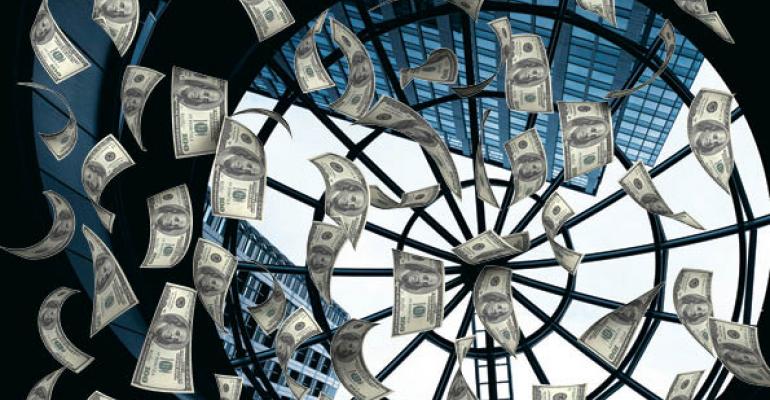Foreign buyers increased their investment in the U.S. commercial real estate markets in the first half of 2014, pouring in $85.4 billion in property purchases here compared to $76.7 billion in the first half of 2013.
Almost half of foreign investment this year, about $37.8 billion, went into the office market, as buyers from countries including China, Russia and Canada fought over trophy properties in major markets. Sales volume was highest in New York City, at $9.4 billion, with $4.6 billion in sales in Los Angeles and just more than $3 billion each in Boston and Washington D.C., according to a recent report by real estate services firm Avison Young.
Mark Rose, chairman and CEO of the Toronto-based firm, says there are two reasons why foreign investors are throwing money into U.S. office buildings: yield and safety. Countries with stable but tight office markets, such as Canada, don’t appeal to investors looking for a risk-reward paradigm, and buyers from unstable countries want to place capital into the strong U.S. market, he says. Canadian buyers alone placed $3.6 billion into the U.S. office market in the first half of the year.
“You can just find better yields in the United States,” Rose says. “You’ll also be taking on a little more risk, but if you’re a Canadian institution or pension fund, chasing after a 6.5 or 7.0 cap rate, you’re looking deep into the U.S.”
Investors from other countries, including Russia and China, and buyers from Latin America are also looking at the U.S. to stash away cash. These “safety capital” bidders, Rose says, have become top contenders for assets in major U.S. markets.
 As the competition heats up, properties in the top U.S. office markets are posting single-digit vacancy rates. Rent growth in the third quarter ranged from 6.0 percent in Minneapolis to 14.4 percent in San Francisco, according to a recent report from real estate services firm Cassidy Turley. Kevin Thorpe, chief economist with the company, said in a statement that the office sector improvement can be directly tied to job growth.
As the competition heats up, properties in the top U.S. office markets are posting single-digit vacancy rates. Rent growth in the third quarter ranged from 6.0 percent in Minneapolis to 14.4 percent in San Francisco, according to a recent report from real estate services firm Cassidy Turley. Kevin Thorpe, chief economist with the company, said in a statement that the office sector improvement can be directly tied to job growth.
“Businesses have been creating well over 200,000 net new jobs per month for several months now, the highest stretch of job creation in almost 15 years,” he said. “About 30 percent of those new jobs require office space.”
Instead of getting into a bidding war with 40 other companies for prime office assets in top markets, Rose says smart investors are looking at secondary markets that are experiencing strong job growth, activity in oil and gas sectors or a technology boom. The more jobs added to a population, the better the office market will perform, he says. “We’ve been pretty good at putting people back to work, and that should lead to better pricing for assets. That is, until interest rates go up,” Rose says.
The Fed is under pressure to raise interest rates, which have stayed the same for about seven years, as the economy rebounds from the recession. Rose says he sides with experts who believe the rate hike will come sometime in 2015, and that it will have a short braking effect on office sales.
“I’m not saying there’s going to be a long or deep reaction by investors, but there will be a correction,” he says. “I think rates going up will be healthy for the property markets. There’s a flood of capital waiting to take over, we just need to pinprick, not pop, some air out of the balloon to let pricing come down to healthy levels.”

